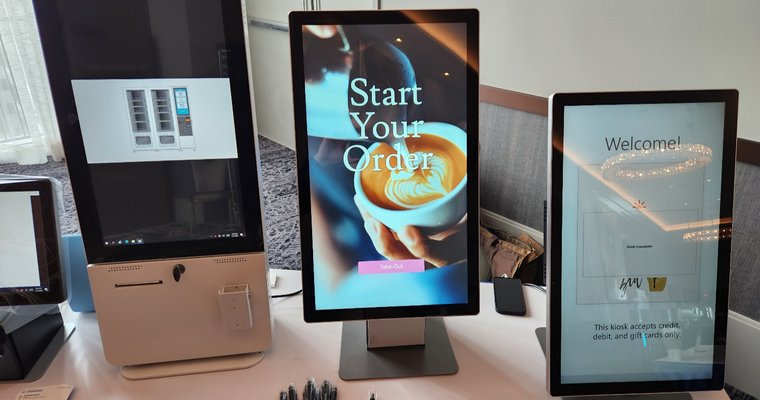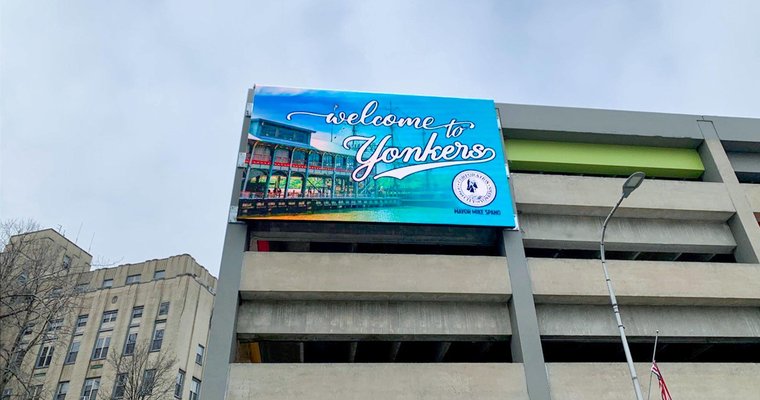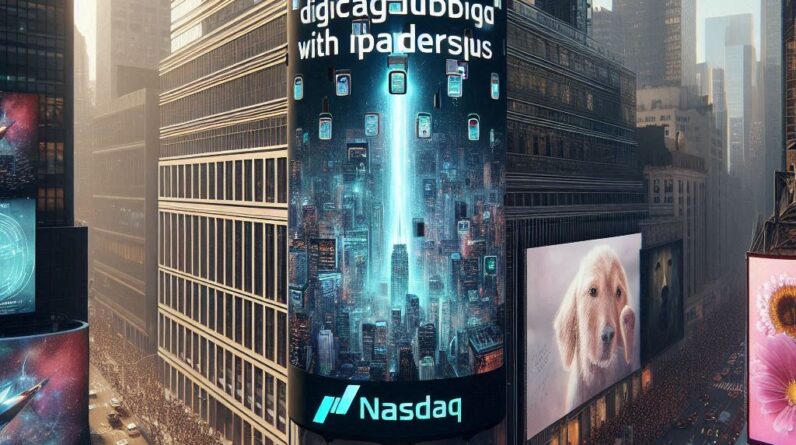
[ad_1]
In my latest travels for Digital Signage Today to cover last week’s Self-Service Innovation Summit in Miami, I was encouraged to see further growth in both scope and quality of digital signage applications across the travel experience.
 Digital signage absolutely dominated a large number of exhibitors I visited at this year’s Self-Service Innovation Summit in Miami. Image: Daniel Brown/Networld Media Group.
Digital signage absolutely dominated a large number of exhibitors I visited at this year’s Self-Service Innovation Summit in Miami. Image: Daniel Brown/Networld Media Group.
In my latest travels for Digital Signage Today to cover last week’s Self-Service Innovation Summit in Miami, I was encouraged to see further growth in both scope and quality of digital signage applications across the travel experience.
From digital signage in hotel elevators to wraparound LED pillar advertisements in Detroit and Atlanta airport terminals to the Epson projectors presenters relied on to share slides during presentations and panel discussions, it was clear to me that digital signage is only continuing to expand its reach.
 |
Digital signage and touchscreen technology dominated across the event (and the hotel it was held in). In this example, Microtouch was demonstrating hotel content at a kiosk. Image: Daniel Brown/Networld Media Group. |
Hospitality
It’s unclear whether event spaces will make a shift to LED screens from projectors (as in our Loew’s Hotel event halls), in part due to the cost and technical challenges of implementation; but I did wonder whether it might not help add some vividness to some of the slides, particularly in the keynote delivered by Mike Abecassis, including colorful anecdotes about the Swiss Alps and cruise ships implementing AI and other emerging technologies.
I also noticed opportunities with what appeared to be newly installed digital signage LED screens throughout the hotel and its event spaces; I wondered whether it might be possible to tie events into the hotel’s CMS, so that instead of showing hotel information only, it might display maps and guides for finding panels, the dedicated press room and other items attendees might find useful.
The exhibitors across the event had massive quantities of digital signage on display in a variety of touchscreen applications and kiosks, from self-order to back-of-house systems for restaurants and hospitality use cases.
 |
I had a front row seat to hear Mike Abecassis, founder and CEO at GameTime and General Vending Service, explaining the power of emerging technology in self-service and customer experiences of all kinds at this year’s Self Service Innovation Summit in Miami. The talk was even more vivid thanks to the digital projector content illustrating core points, though I found myself wondering whether OLED might someday become de rigeur in event venues. Image: Daniel Brown/Networld Media Group. |
Airports
It was instructive to me to see that even with powerful content strategies, hardware selection can be a limiting factor; for example, the Victoria’s Secret shop in Atlanta had beautiful digital displays across the front and interior of the store, but I noticed there was a lack of anti-glare and viewing angle width on one of the primary displays (see video).
Flying Delta to and from Miami, I finally had a chance to enjoy my first trip on a Boeing Airbus A380-800, where I noticed an expansion of the Delta digital experience initiative, including crisp new LED screens on the back of every seat and the continued centrality of the Delta Parallel Realities experience to the boarding process after security, which I’ve previously covered in depth.
It seems to be a winning strategy, both as a digital signage professional and a passenger, as I consistently saw the majority of in-flight screens in use (including an overwhelmingly positive review for the Barbie movie from the lady sitting next to me on the way to Miami). While I ended up watching downloaded content on my tablet (I like to choose my in-flight reading and watching matter in advance), I did admire the resolution of the Delta displays.
 |
Delta’s Parallel Reality Experience in Detroit Metropolitan Airport. Image: Daniel Brown/Networld Media Group. |
And that illustrated something we’ve been seeing more and more in our coverage of the industry and emerging technologies like augmented reality; a growing chorus of experts and innovators seem to indicate that there is a movement across the consumer technology space for consumers to bring their own screens/hardware to various retail, travel, and metaverse/augmented reality experiences, with brands providing the content/experience engineering. (Examples include my conversations with Shawn Frayne, creator of the Looking Glass holographic display system, who advocates for a future where 3D content does not require wearables like goggles).
 |
 |
After passing the imposing gates and scanning your boarding pass, the Delta Parallel Experience uses proprietary technology to show your boarding information to your eyes only (no matter how many other passengers are using the service around you). Image: Daniel Brown/Networld Media Group. |
Furthermore, the expansion and proliferation of digital displays to virtually every part of my day as a business traveler, including the very elevators (which, alas, did not seem to leverage the vast potential for digital OOH advertising, a powerful potential revenue stream and value-add for consumers seeking nearby amenities or attractions) reminded me that technology is only going to accelerate this trend. I was pleased last week to see that Ori Mor, co-founder and chief business officer at Wi-Charge, whom we have interviewed more than once about the invention of short range wireless power in the Wi-Charge system that powers everything from restaurant tabletop digital signage promoting drinks to smart home locks and toothbrushes, has been interviewed by Wired about the expansion of his company’s work in the wireless power space; this is only good news for digital signage and advertising, because it further increases ways to add digital signage reach to unexplored areas, tapping revenue while adding value to consumers.
Ori Mor, co-founder and chief business officer at Wi-Charge, shared an exclusive product release with me while I was traveling to the Detroit Automate show, and shared valuable insights into the future of digital signage and wireless power. Video: Daniel Brown/Networld Media Group. |
The future of digital signage is anything but clear, as technology evolves faster than we can keep up; but the one thing I know is that this future is going to be bright and lucrative for operators and brands who understand how to leverage it properly, creating content that surprises and delights consumers while adding value.
Daniel Brown is the editor of Digital Signage Today, a contributing editor for Automation & Self-Service, and an accomplished writer and multimedia content producer with extensive experience covering technology and business. His work has appeared in a range of business and technology publications, including interviews with eminent business leaders, inventors and technologists. He has written extensively on AI and the integration of technology and business strategy with empathy and the human touch. Brown is the author of two novels and a podcaster. His previous experience includes IT work at an Ivy League research institution, education and business consulting, and retail sales and management.
[ad_2]
Source link






